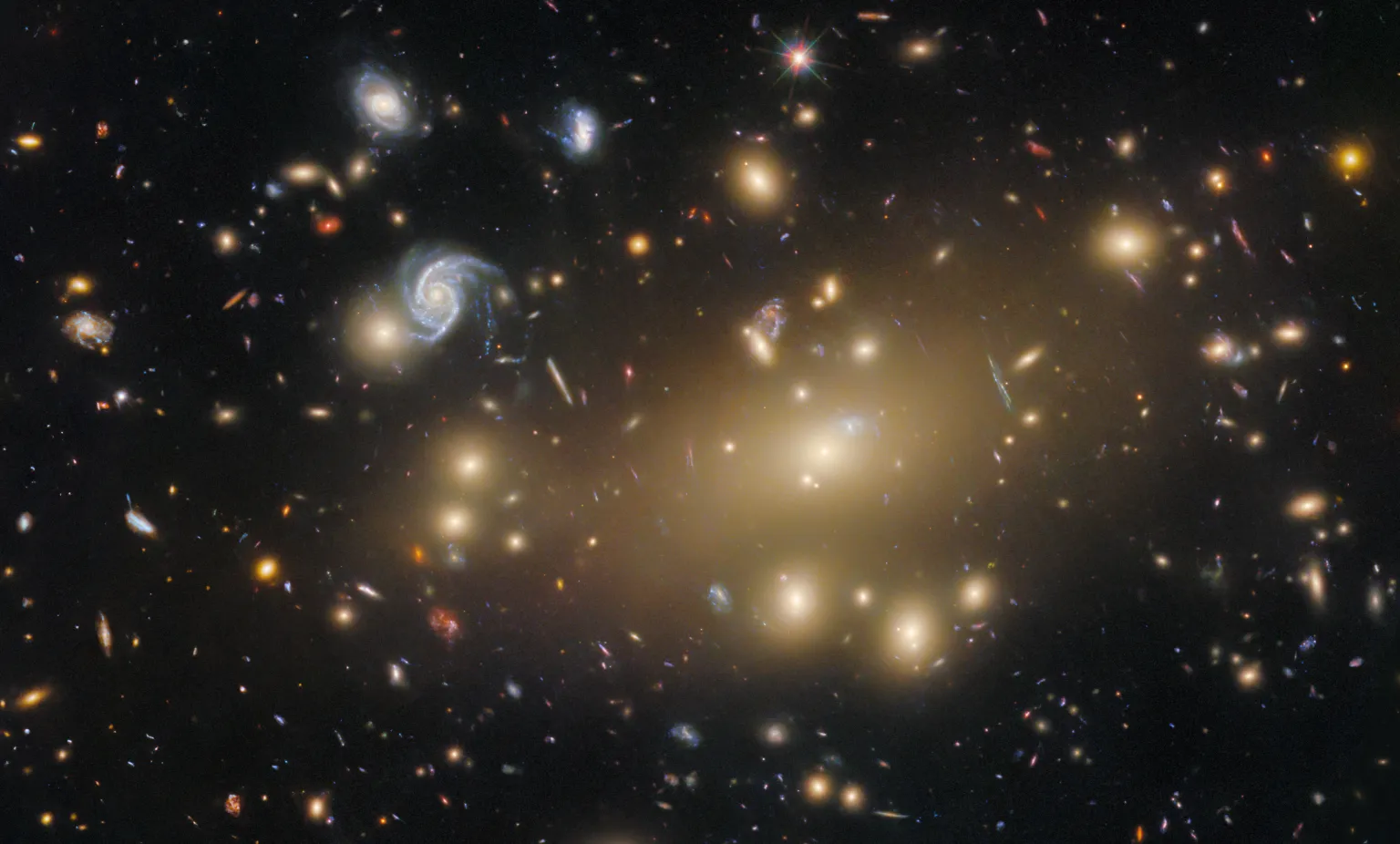Hubble Observes Dark Matter in Abell 209

Abell 209: A Glimpse into the Depths of the Universe
A massive, spacetime-warping galaxy cluster—Abell 209—takes center stage in this stunning image from the NASA/ESA Hubble Space Telescope. Located 2.8 billion light-years away in the constellation Cetus, this immense cluster reveals the intricate tapestry of our cosmos.
What Lies Within Abell 209?
While over a hundred galaxies are visible in the image, much more lies hidden. The space between these galaxies is not truly empty. It’s filled with extremely hot, diffuse gas detectable only in X-ray wavelengths. Even more fascinating is the presence of dark matter, a mysterious substance that neither emits nor reflects light.
Understanding Dark Matter Through Gravitational Lensing
Though invisible, dark matter reveals itself through its gravitational effects. In the case of Abell 209, the enormous mass of the cluster warps spacetime and subtly distorts the images of background galaxies—a phenomenon known as gravitational lensing. Unlike dramatic lensing arcs seen in some clusters, Abell 209 displays more subtle streaks and curves within its golden glow.
Why Abell 209 Matters to Cosmology
Hubble’s precise imaging allows scientists to measure these distortions and map the hidden mass within the cluster. This insight contributes to understanding how galaxies form and how dark matter and dark energy shape our universe. Current models estimate the universe consists of only 5% normal matter, while dark matter accounts for 25% and dark energy makes up the remaining 70%.
The Role of Hubble in Unveiling Cosmic Mysteries
Thanks to Hubble’s unmatched resolution, astronomers continue to investigate galaxy clusters like Abell 209 to explore the unseen forces of our universe. Each observation brings us one step closer to answering some of science’s most profound questions.


MCW19cash, huh? Gotta love the name. Jumped in, and it’s a pretty solid platform. Good selection of games and the payouts seem fair. I’d recommend giving it a whirl if you’re looking for something new. Give it a try: mcw19cash
35phfunlogin is pretty straightforward. Easy to log in, easy to play. Nothing fancy, but gets the job done! If you like it simple, this is for you. 35phfunlogin
Xsktangiang is part of my weekly routine. Pick the numbers, grab some snacks, and hope for the best. Good luck everyone! Visit xsktangiang.
Okay, gotta say… heiststakesvn sounds intriguing. Looks like a lot of things are happening, so going to check it out soon. Will definitely report back.
What’s up, everyone? Saw 755betnet popping up. The suspense is killing me! Gonna dive in and see what it’s got. Try your luck here: 755betnet